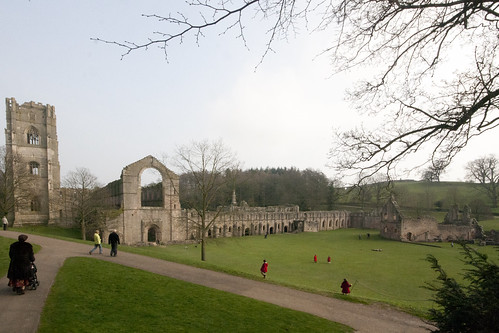 |
| Fountains |
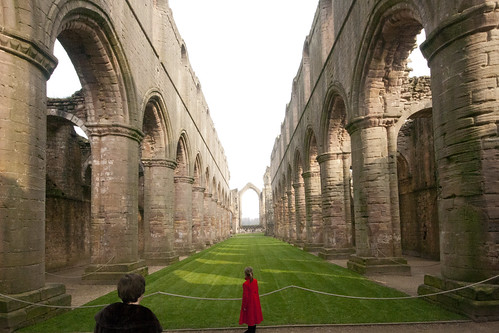 |
| Fountains Abbey Church, from the West Door looking East |
Fountains Abbey is staggering. It is good to be reminded that the Medieval cathedrals which we can see to this day were parallelled by the great monastic churches, which were to be found all over England. But it is not just the Abbey Church which is impressive; there are vast ranges of buildings, lay brothers' and monks' quarters, three guesthouses, and all manner of service buildings, for what was a major cultural and economic, as well as religious, centre.
 |
| Fountains, Cellarium |
These were both Cistercian houses, and the architecture is restrained, from a decorative point of view, though what the Cistercians withheld in terms of detail they certainly made up for in scale. The frugality of the places remains striking however: I noticed, this time, the amazing lack of heating. There are great fireplaces in the kitchens and the Calefactory ('Warming Room'), and in the Guest Houses, but really nowhere else. The other day I was in a local secular ruin from the same era, Minster Lovell, and there are fireplaces wherever you look. These Abbeys, remember, are in Yorkshire, not Tuscany!
The sheer madness of the Dissolution of the monasteries is hidden from us today in part by the fact that so many of the great buildings have disappeared. Oxford, for example, had a number of great monastic houses, of which scarcely a trace remains. Not many of the buildings were even reused. So we don't miss Osney Abbey, for example - you'd never know it was there. (You drive through part of it when you arrive from London on the train). And yet this was an institution of great importance, with a huge church which was briefly intended to be Oxford cathedral. In Yorkshire, however, these more isolated houses were not so attractive to people looking for stone, and they weren't in the way of any railway building. So they are still there.
I was pleased to see that the National Trust made it clear in their information that the decline in the fortunes of Fountains Abbey due to a series of disasters in the 14th Century - sheep disease, famine, occupation by the Scots, and the Black Death - was in the past, by the time of the Dissolution, and the place was having a sustained recovery. Indeed, you couldn't deny it since some of the most impressive buildings date from the 15th Century, such as the great tower built to the north of the Abbey Church.
The same is true of monastic life in general: it took a very heavy hit in the Black Death, but they were recovering strongly during the 15th Century. Comparing the highest number of monks reported at these places with the number at the Dissolution, an old trick of Protestant propagandists, is a meaningless exercise, particularly as the latter numbers tend to come from the accounts of the agents closing the places down, and are therefore minimised (not counting lay brothers or novices, for example).
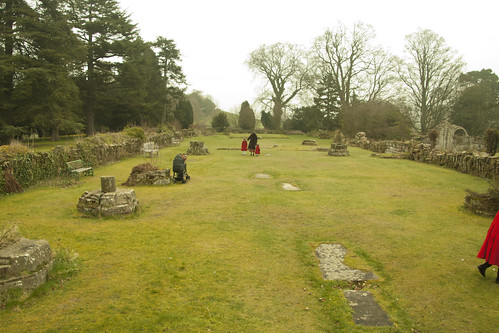 |
| Jervaulx Abbey Church, from the West end |
It must be said, all the same, that these houses yielded few martyrs for the faith: the one Yorkshire Cistercian monk who refused to take the oath of Supremacy was the martyr George Lazenby of Jervaulx; another monk of Jervaulx, Thomas Mudd, survived that moment of crisis but is recognised as a confessor.
Jervalaux Abbey was much more badly damaged than Fountains, in revenge for its role in the Pilgrimage of Grace. But there is still a lot to see. As you go around these places you get a feel for the layout, since all Cisterian Abbeys used the same basic plan. A bit like Roman army camps!
I've just read a very good article in the current Latin Mass Magazine on the loss of the monastic libraries: when the monasteries were dissolved, the libraries went to whoever got the property, and nearly all the books ended up being destroyed. They were, literally, used as loo paper. The author, the excellent Diane Moczar, quotes a succession of 17th Century Protestant antiquarians who lament the loss, particularly of historical sources. Every monastery had a library; thousands and thousands of volumes must have been lost. Some of the destruction was deliberate - college libraries in Oxford were also ransacked for Catholic theology books - but in the case of the monastic libraries it was indiscriminate. The loss to English culture and our historical self-understanding is incalculable.
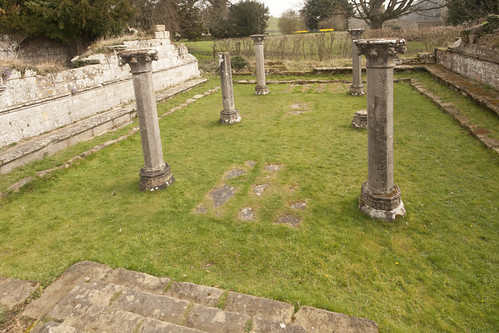 |
| Jervaulx Abbey, Chapter House |
These Abbeys present, now, a touching sight, as well as an informative one. They began to be appreciated in the 18th Century from an aesthetic point of view, which is why they have survived as well as they have to this day. Even in a state of ruination they have had an important impact on our culture, through the medium of the Romantic movement, and the Medieval revival which followed. Sir Walter Scott, who was far from sympathetic to Catholic theology, was overwhelmed by the sight of Melrose Abbey by moonlight, and he recommends his reader to go by night:
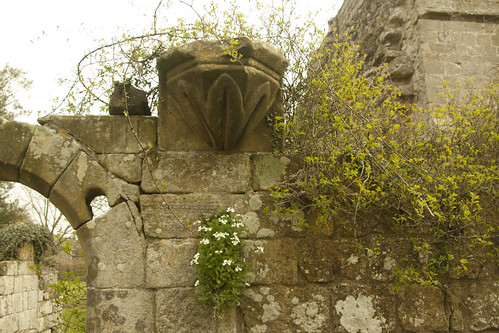 |
| Jervaulx Abbey, romantically draped with wildflowers: it is privately owned, and not so obsessively tidy |
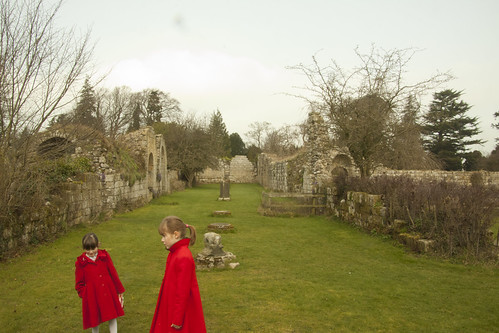 |
| Jervaulx Abbey buildings |
You never know the consequences of your actions.What these obscure monks built in the fastness of Yorkshire speaks more eloquently today of the Catholic Faith, nature perfected by grace, than many of the things which must have seemed more important at the time. These stones happened to survive.
More photos.
More photos.
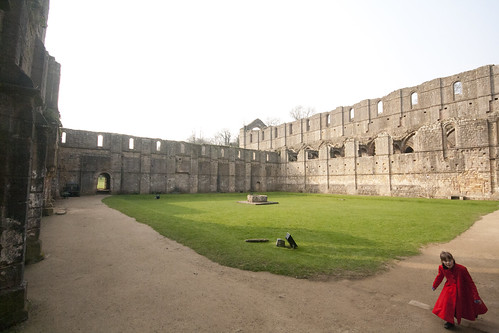


Joe, thank you for this post! The wide-angle lens does some wonderful things for the photographs, eh? Your photos convey the immensity and grandeur of the ruins; they make me long to visit in person.
ReplyDeleteOne day you should! The children loved them.
ReplyDelete